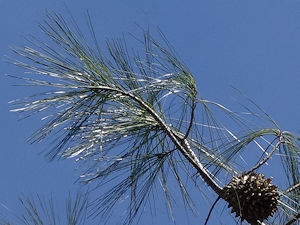
Needles: Pale gray-green, growing in bundles of three. They are 6-12 inches long with white stomatal bands on all sides.

Cones: The large cones are up to 10 inches long and nearly as wide. They are heavy and have thick, woody scales. The cones remain on the tree for up to 7 years after they mature, which makes it easy to spot this tree. You can find cones on the ground for many years after they fall. The edible seeds are the largest of the pines, up to one inch long.
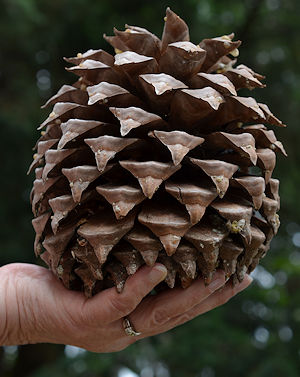
Bark: The bark is dark brown and breaks into irregular furrows on large trees.
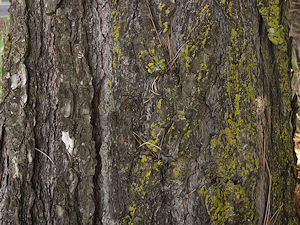
Where it grows: Gray pine is rare in Oregon, but it grows below 4000 feet in several locations, mostly in Jackson County, northwest of Medford. It also grows around the edges of the Central Valley of California.
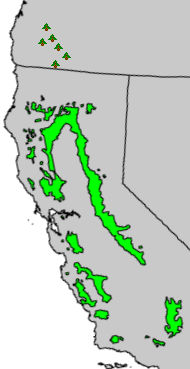
Names: Gray pine has long been called Digger pine, after a pejorative name for the native Paiute people, who collected and ate the seeds. This offensive name is no longer commonly used in literature describing the tree. The scientific name, sabiniana, honors Joseph Sabine, secretary of the Horticultural Society of London. Other common names: Sabine pine, foothills pine, grayleaf pine ghost pine.
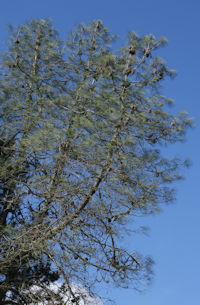
© 2016 Ken Denniston